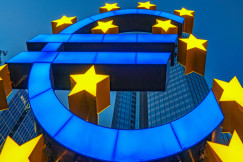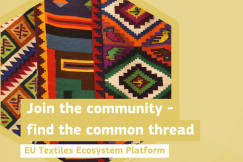Library and support resources
03 September 2025
New indicators to track Europe’s transition to a circular economy
Library and support resources
03 September 2025
Investments and funding
R&I, techniques and technological solutions
Social dimension
+10 more
Login / create an account to be able to react
-
7

The EU-funded project ‘Circular Economy Living Lab for Monitoring and Indicators (CircEUIar)’ has expanded and improved indicators to better track Europe’s shift to a circular economy, enhancing data on resource use, product lifetimes, and circular business models to support policymaking.
Topics
Albania
Armenia
Austria
Belgium
Bosnia and Herzegovina
Bulgaria
Croatia
Cyprus
Czechia
Denmark
Estonia
EU-27
Finland
France
Georgia
Germany
Greece
Hungary
Iceland
Ireland
Italy
Kosovo
Latvia
Liechtenstein
Lithuania
Luxembourg
Malta
Moldova
Montenegro
Netherlands
North Macedonia
Norway
Poland
Portugal
Romania
Serbia
Slovakia
Slovenia
Spain
Sweden
Switzerland
Türkiye
Ukraine
Other
Academic / Research and VET Institutions
EU Institutions
Industry Associations and Chambers of Commerce
National authorities
NGOs / Non-profits
Regional Authorities
Social Economy Entity
-
Transition Pathway's building blocks
-
-
Investments and funding
-
R&I, techniques and technological solutions
-
Social dimension
-
Sustainable competitiveness
-
Regulation and public governance
-
-
Industrial ecosystems
-
-
Digital
-
Energy intensive industries
-
Proximity and social economy
-
Textile
-
-
Textiles ecosystem areas
-
-
Research and Innovation
-
Waste management, reuse and repair
-
Business support and Communication
-
Not area specific (interested in more than one of the above)
-
Share
Circular Economy Living Lab for Monitoring and Indicators (CircEUIar), a four-year EU-funded research project (2021-2024), has strengthened the set of indicators available to monitor Europe’s progress towards a circular economy. The work responds to growing policy demand for reliable and harmonised data to assess how effectively resources are being used, reused, and kept in circulation across the EU.
The project, carried out under the Horizon Europe framework, reviewed existing metrics and developed new ones to cover gaps in monitoring. It focused on material flows, consumption patterns, and environmental impacts, aiming to provide a clearer picture of circularity at both EU and Member State levels. The resulting indicators feed directly into the EU’s Circular Economy Monitoring Framework, supporting evidence-based policymaking.
Key Insights
- Broader coverage: New indicators expand beyond waste management to capture resource use, product lifetimes, secondary raw materials, and circular business models.
- Data harmonisation: Work on aligning methodologies improves comparability of circularity data across Member States.
- Policy relevance: The strengthened toolkit will inform the European Green Deal, the Circular Economy Action Plan, and national strategies.
- Future development: The project identifies remaining data gaps and recommends ongoing investment in research and statistical capacity to refine circular economy metrics.
By advancing the measurement of circularity, this project equips policymakers, businesses, and researchers with better tools to track progress and design effective strategies for resource efficiency and sustainability in Europe.
Read the full report here.
Documents
Comments (0)
See also
Small mid‑caps: bridging the gap between SMEs and large companies
- Categories
- Infrastructure Investments and funding R&I, techniques and technological solutions +28 more
Get the most out of the EU Textiles Ecosystem Platform: the Beginner kit is now available
- Categories
- Infrastructure Investments and funding R&I, techniques and technological solutions +28 more
The EU’s vision for sustainable fashion: transforming the textiles sector by 2030
- Categories
- Infrastructure Investments and funding R&I, techniques and technological solutions +28 more




